Sitting in an office chair for long periods of time can certainly cause back pain. That is because sitting on an office chair in a static posture can increase stress in the back. Sitting on an office chair can also increase the pressure on the arms, shoulders, legs. All the pressure will add huge pressure, especially on the back muscles and spinal discs.
Therefore, knowing how to adjust office chair for lower back pain can be very beneficial. You can easily adjust your office chair by adjusting the chair’s height, angle, backrest angle, backrest height, armrest height. These adjusting steps will help you to reduce back pain and keep your chair in stationary positions.
Furthermore, over time incorrect sitting posture on an office chair can also damage your spinal structure. That’s why it’s essential to know the comprehensive way to adjust an office chair to prevent or reduce back pain. But do not fret; we will show easy-to-follow guidelines to adjust or set your office chair.
Why Does My Lower Back Hurt In My Office Chair?
According to posChair, sitting postures often cause high disc pressure and strained spine. When you will sit on your office chair for prolonged periods of time, then it will definitely cause low back pain. Sometimes, it also worsens people’s existing back pain-related issues.
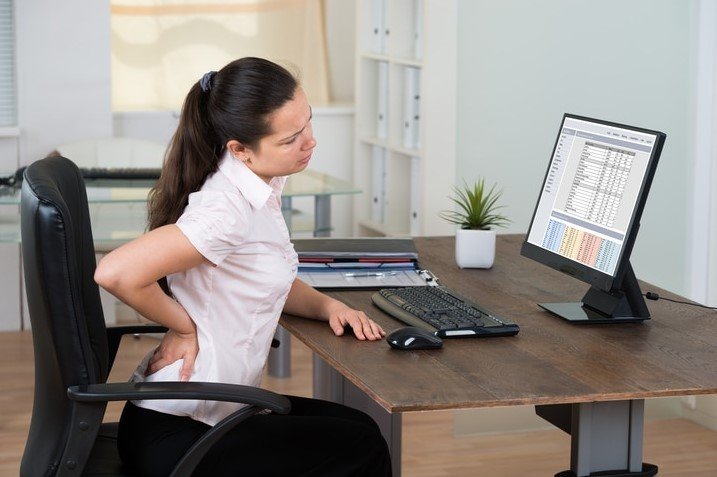
However, static sitting positions or chair’s angle can also be a reason to increase back pain. Many people’s natural tendency is to slouch down their chairs while sitting on an office chair. This position can easily be why surrounding structures in the spine and ligaments and strain the discs. Moreover, sitting with poor posture can also cause permanent damage on the spinal.
How to Adjust Office Chair for Lower Back Pain
Your sitting postures will affect your entire health and your backside; that’s why the seat should support your entire body. Follow the below-mentioned steps to earn the level best health benefits from your office chair and prevent lower back pain.

1. Adjust the Chair Height
Proper adjustment of the office chair’s height can significantly reduce low back pain. The height of your chair should be adjusted to the point where your elbow can form 90-degree angles to the desk height.
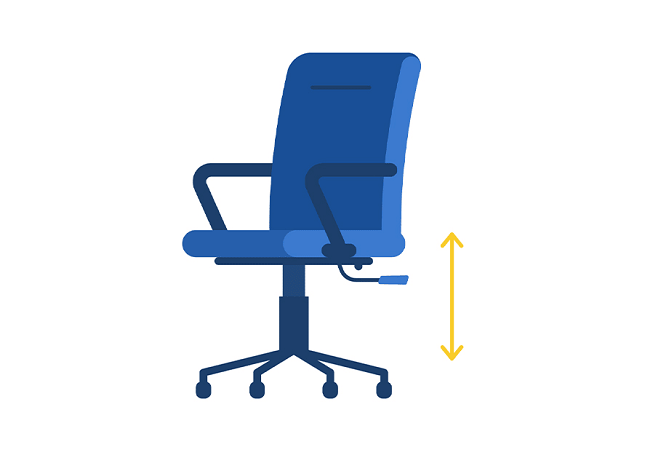
Use the lever to up and down your chair, and it is usually on the down right side of any chair. Set the chair the way that your elbow underside should be at your desk height. Remember, your hands should never be higher than your elbows.
2. Adjust the Recline and Tilt
You need to recline your office chair two or three times a day because it helps relieve stress on the spine. While using the mouse and keyboard, reline your chair at 110°. It will improve circulation in your body muscles and redistribute the pressure.
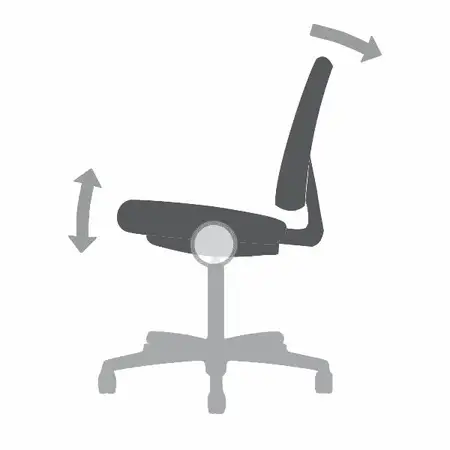
If you are using ergonomic chairs, it will allow adjusting the title. Simply adjust it so that you can lean back with little force. You also need to make sure the chair does not lean too hard when you lean forward.
3. Adjust the Backrest Angle
When you sit while maintaining the right sitting posture, the backrest should support your back. If you feel uncomfortable leaning forward or backward, you need to adjust it. Office chairs come with a feature of a tilt tension control knob under the front chair. You need to turn the knob a few times to loosen or tighten the tension. You need to do it until you find a comfortable angle of the backrest.

4. Adjust the Back Height
Properly adjusting your chair’s back height, you can easily reduce lower back pain. Most offices come with a back height adjusting system, therefore adjust it as your required support. You will find a knot on the frame or stem of the backrest. Simply turn the knob to loosen it to raise or lower the backrest. Continue to do it, until you feel complete firm support on your lower back level.
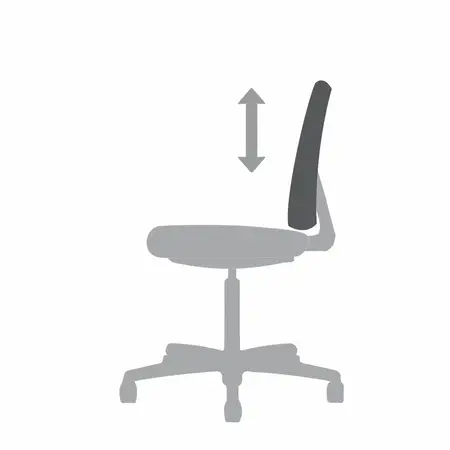
5. Adjust Seat Depth
Seat depth is also an essential thing you need to adjust properly on your office chair. Proper seat depth adjustment can potentially resolve lower back pain-related issues. As most of the office chair does not come with the same feature, you can manually adjust your sitting position. Always remember never to have more than two or four-finger gaps between the edge of the seat and your knee.
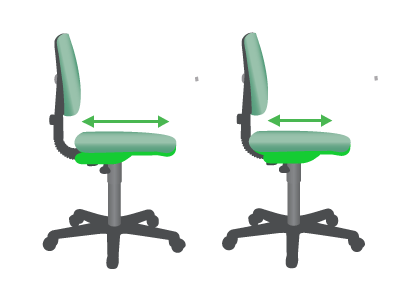
6. Adjust the Armrests
Your back and shoulder will suffer if you do not adjust the armrests properly. You need to bend your elbows at a 90° angle and sit in an upright position. After that, you will find the adjustment button on or under the armrests. You need to adjust the armrests so that your elbows barely touch.
7. Adjust the Lumbar Support
You can raise or lower your office chair’s backrest based on your requirements. However, most office chairs come with a built-in lumbar support feature. You have to be sure that the lumber perfectly fits on your lower back. If your adjustments do not work well, then readjust the lumber and set it as your performance. Along with lumbar, you can also use a cushion for lower back pain.
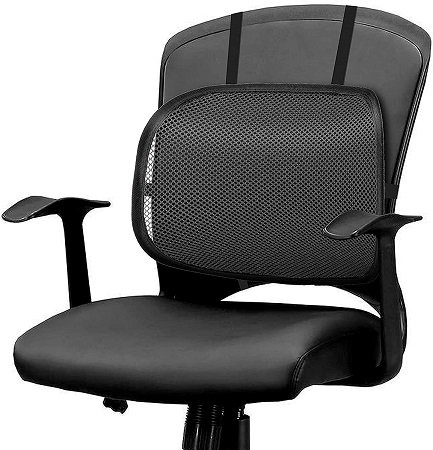
Others Things To Follow For Reduce Back Pain In The Office
Here we have included some steps that will help you to reduce back pain in the office. By following the below-mentioned steps, you can reduce back pain and gain comfortable experience working on an office chair.

Elbow Measure:
First, you need to ensure maximum comfort by adjusting your elbow angles. You need to sit closer to your computer desk, so your upper arms are perfectly parallel to your spine. Simply adjust your chair’s height until your elbows reach a 90-degree angle to your workspace.
Thigh Measure:
Proper chair adjustment is primarily based on thigh measures. Your thigh muscles should easily slide under your desk, so you can sit comfortably. Always keep your thigh parallel to the ground, keep your feet flat on the floor. You also need to keep your knees at a 90-degree angle. This will improve the blood flow of your enter health and at the back of your lags. It also relieves pressure and ensures your spine is perfectly aligned.
Calf Measure:
Try to reach your calves by pressing your back firmly against the chair. If you are not able to do it easily, then you need to adjust the backrest forward. You also need to insert back support; it can be a rolled-up towel, a lumbar, or a pillow.
Low Back Support:
The office chai’s backside is basically designed to support your posture. This is why it’s essential to use a chair that has a lumbar support system. The use of a lumbar will help to minimize the load on your back. You also need to ensure that your natural curve of the low back perfectly fits on the lumbar.
Resting Eye Level:
You need to ensure that your eyes should be perfectly aimed at the center of your computer screen. If the screen of your computer is higher or lower than your gaze, you need to adjust it. You can adjust it by raise or lower your computer screen. Proper screen adjustment will help you to reduce pressure or strain on your upper spine.
Conclusion
We spend the majority of the time in our office or job by sitting. So you can clearly understand a chair is the key cornerstone of any office. However, it’s essential to set the chair properly, which will properly fit your body posture. By accurately adjusting your work environment, you can easily reduce the stress placed on your back for a lifetime.
The right office chair will allow you to customize the height, armrest, lower back support, seat depth, and so on. As we have discussed how to adjust office chair for lower back pain, follow the procedure. It will ensure your comfort while handling tasks or enjoying or stress-free office life.

